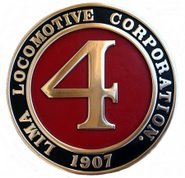This history was prepared by Robert Niles for the Eldorado National Forest in 1979. The El Dorado Western Railway blog will reprint serialized portions of Mr. Nile’s report in the coming months.
The camps were established at various locations along the railroad logging line to accommodate the logging and construction crews close to their work. None of the woods crew were quartered at the Caldor Sawmill complex while it operated up until 1923. They stayed out all week in the bachelor camps and came to Caldor only on the weekends.
Life in the logging camps was primitive, but after a long day of hard physical work there was little time or thought given to recreation. The men were kept well fed with a high protein diet of fresh beef sent in from the slaughterhouse at Caldor.
Consumption of various alcoholic beverages was undoubtedly considerable. The main recreation experience, as time allowed, was fishing for trout in the abundantly stocked rivers and streams adjacent to the logging camps.
The first camps that were established apparently were of a more permanent nature that in later years. Horses and mules were being used extensively for skidding operations as the steam donkey had not yet entirely out their use. The care of the animals, therefore, necessitated the building of stables and corrals, and so a more durable camp complex developed.
Rough sawn lumber was furnished from the sawmill, and the cook house, living quarters, smithy, stables, barns and out buildings were constructed, generally contingent to a spring or other adequate water supply.
By 1915 the transition from animals to steam donkeys for log yarding and skidding needs had pretty well taken place, and the logging camps took on a much more temporary and transient nature.
Wood framed buildings were fabricated at the Caldor mill and were made up of rough, board and batten construction. These were about 8’x16’ in size and would accommodate four men. These buildings could be cross hauled by steam donkeys on to log bunk cars and moved from camp to camp as the scene of logging operations shifted.
Subscribe to:
Post Comments (Atom)


No comments:
Post a Comment